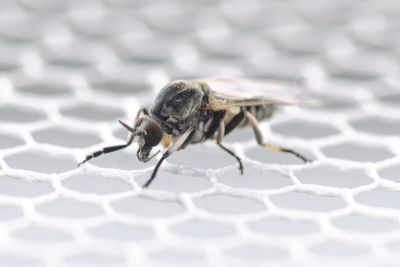News
Black flies on the rise: research team with LOEWE-TBG involvement analyses the insects' distribution areas in four federal states and finds an increase in numbers

It looks harmless, but its bites are unpleasant and can have devastating consequences: the blackfly (Simuliidae). These flying insects belong to the so-called "pool suckers". This means that the females bite the skin of their host and then consume the drop of blood that forms there. The sting can not only trigger serious allergic reactions, it can also transmit serious infectious diseases. Reason enough for scientists from Goethe University Frankfurt, the Senckenberg Biodiversity and Climate Research Centre and the LOEWE Centre for Translational Biodiversity Genomics (TBG) to investigate the occurrence of the blackfly in Germany in more detail.
There are a total of 57 species of black flies in Germany. Using data sets collected in Hesse, North Rhine-Westphalia, Rhineland-Palatinate and Saxony, the research team categorised the twelve most common species "into three biogeographical groups: Species living at the headwaters of watercourses, species widely distributed across different landscapes and lowland species."
In the study published in the journal "Science of the Total Environment", the researchers were able to predict different development trends for the three different groups: "The group of species with a distributional focus in the headwaters is considered potentially endangered due to rising temperatures and increasing chemical pollution of water bodies. Species in the third group, on the other hand, which include blackfly species of veterinary and human medical relevance, are characterised by broader niches and thus a higher tolerance to anthropogenic changes. Medically relevant species are characterised by particularly aggressive biting behaviour towards mammals and humans and often occur in very high numbers."
"The development trends for the medically relevant blackfly species derived from the results of our study are an example of how vector-borne infectious diseases can be promoted by global change. Our modelling approaches and results help us to efficiently design monitoring and action programmes for vector-competent species and to derive predictions about future developments," summarises Professor Dr Sven Klimpel from LOEWE-TBG.

